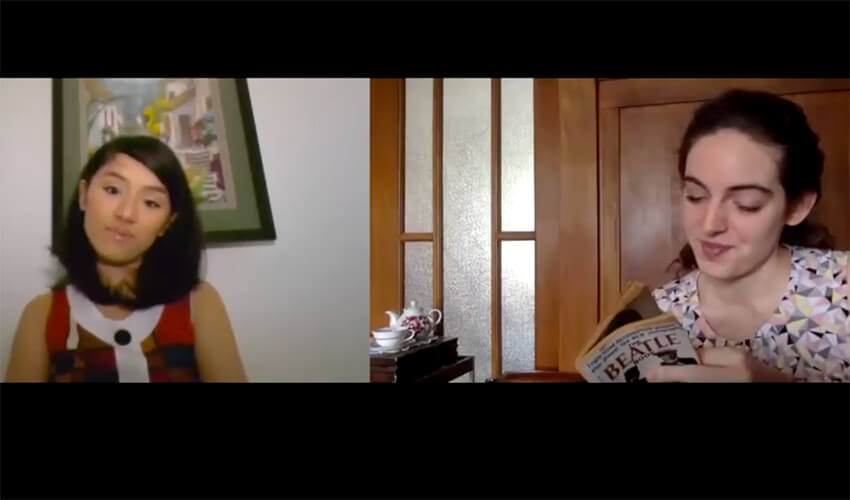
For 25 years, San Francisco State University’s School of Theatre and Dance has produced the Fringe Festival, featuring original short plays written, directed and acted by students. But in true dramatic fashion, the COVID-19 global pandemic threatened to cancel the 2020 show. For a short while, Fringe Fest was scrapped. But then a graduate student playwright, along with Theatre Arts Professor Roy Conboy, decided the show must go on.
Creative Writing graduate student Ali Littman wrote “Marla,” her first-ever play about a real-life friend who was killed in a terrorist bombing in Israel. She hoped to stage it at Fringe Fest this spring. When she heard the show was canceled, she was heartbroken, fearing this could be her only chance to stage her show. So, she and Conboy hatched a plan to save the festival by debuting the productions online.
At first they considered performing live via Zoom, but there were too many technical issues to contend with, particularly internet connectivity concerns. Instead, recordings of some of the student plays will be live streamed via Zoom throughout May, followed by a chat with the playwright. All 11 plays will be archived on the department’s YouTube channel.
Transferring the productions online wasn’t too challenging, Conboy says. He brought the Fringe Fest to San Francisco State in the 1990s, and the plays, by design and budget, never required a lot of production support. “That way we could put on 11 short plays,” he said. “Some of the plays have adapted really well to the online format.”
For example, Conboy directed Littman’s play “Marla,” which depicts dialogue among three friends nine years after the death of Marla. The attacker is about to be released in a prisoner exchange, which is what prompts the interaction between the trio.
“Originally, it was meant to be a really bare stage with just three chairs and [the characters] all together, but we turned it into a video call between the three of them,” Conboy said. “We don't have the movement elements, but we still have the interaction of the human beings and the emotions that are at play.”
Some students have opted to turn their plays into radio dramas with no visual component, says Theatre Arts Lecturer Terry Amara Boero, who is directing two of the student plays. Another play, “Amazon,” is about last year’s rainforest fires, so the actors will use images of the fires as a virtual background. For some plays, scenes needed to be edited together, so there has been a bit of video editing involved. Another play takes place at a bus stop in the middle of nowhere, so the virtual background is a bus stop and all the background noises are spoken, she adds.
One major benefit of the online format is that the works can be seen by people around the world, Littman says. “It’s exciting to see family and friends RSVP to support the show,” she said. “It’s also scary because it's being shared with a much wider audience. Now people who don't know me, and were Marla’s close friends, will probably watch it. So this thing I wrote as an experiment is being showcased to all these people. It's challenging me to confront one of my biggest fears as a writer."
— Jamie Oppenheim